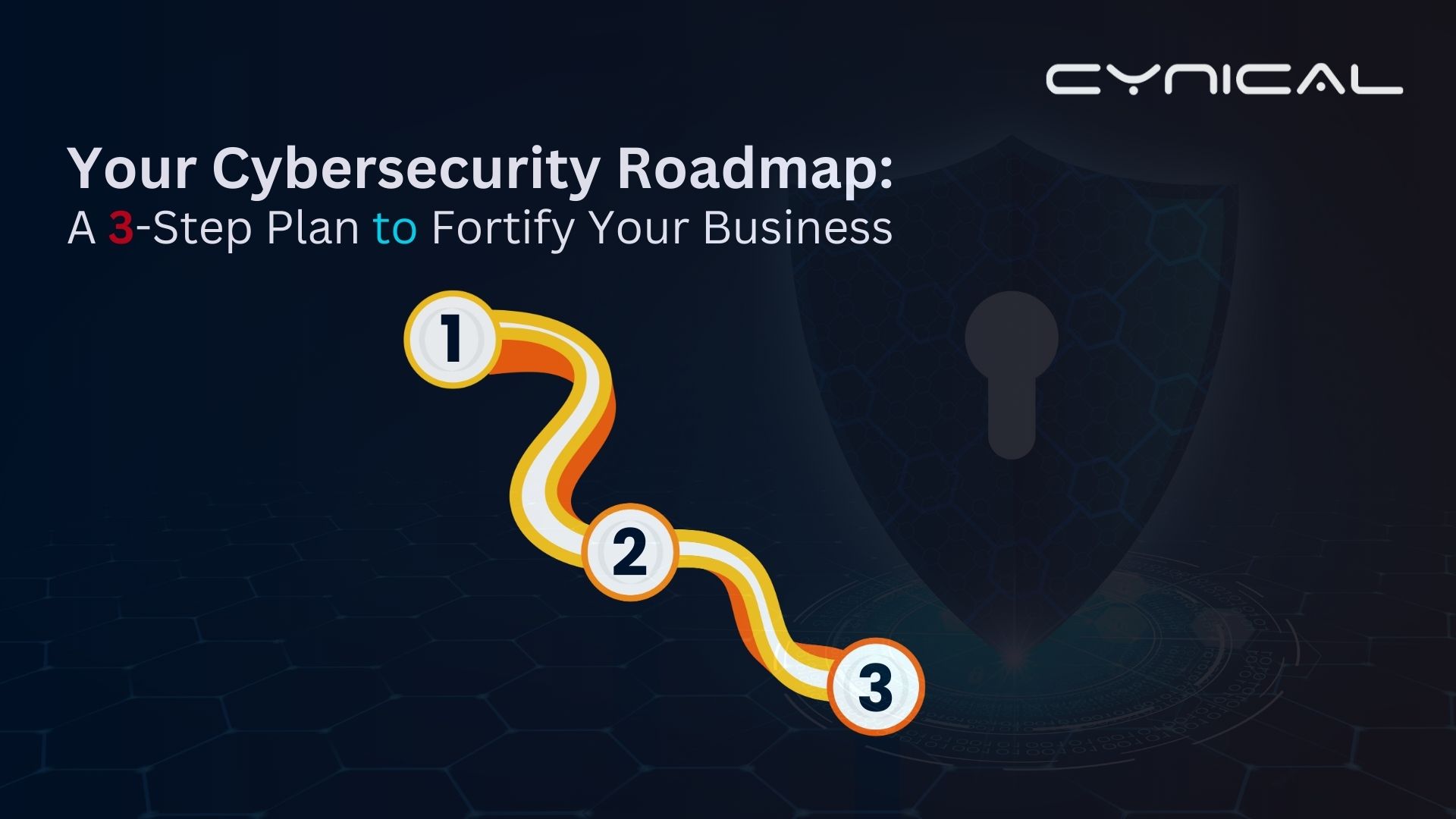- October 21, 2024
- Posted by: Bikash Sharma
- Category: Awareness, Business plans

Your Cybersecurity Roadmap: A 3-Step Plan to Fortify Your Business
In an increasingly digital world, cybersecurity is no longer just a concern for IT departments; it’s a fundamental aspect of business strategy. As cyber threats continue to evolve in sophistication and frequency, having a robust cybersecurity plan is crucial for protecting your assets, reputation, and customer trust. This blog outlines a comprehensive three-step roadmap to fortify your business against cyber threats over the next three years.
Year 1: Assess and Identify Vulnerabilities
The first step in enhancing your cybersecurity posture is to assess your current situation. In Year 1, the focus is on identifying vulnerabilities that could expose your business to cyber threats. A proactive approach in this phase sets the foundation for your security initiatives.
Key Actions to Take:
- Vulnerability Assessment:
Conduct a thorough examination of your systems and processes to identify weaknesses. This includes scanning your network, applications, and devices for known vulnerabilities. Utilizing automated tools can streamline this process, but manual testing should also be employed for a comprehensive review. - Security Audits:
Perform an audit of your existing security measures to evaluate their effectiveness. Review policies, procedures, and compliance with industry regulations. This will help you understand where your security measures fall short and what improvements are necessary. - Penetration Testing:
Hire cybersecurity experts to simulate real-world attacks on your systems. This “ethical hacking” approach provides valuable insights into how attackers might exploit vulnerabilities. The results of penetration tests will inform your immediate security needs and long-term strategy.
Why This Matters:
Identifying vulnerabilities is crucial for implementing basic security controls. By understanding where your weaknesses lie, you can prioritize your efforts and allocate resources effectively, ensuring that you address the most critical threats first.
Year 2: Strengthen Security Posture and Align with Standards
Once you’ve identified your vulnerabilities, it’s time to take decisive action. In Year 2, your focus should be on strengthening your security measures and aligning them with industry standards. This proactive approach enhances your overall security posture.
Key Actions to Take:
- Maturity Assessments:
Evaluate your security practices against industry benchmarks, such as ISO 27001 or NIST Cybersecurity Framework. This assessment will highlight areas for improvement and help you establish a roadmap for achieving a higher level of cybersecurity maturity. - Network and Infrastructure Security:
Invest in advanced security solutions tailored to your organization’s needs. This includes firewalls, intrusion detection systems, and secure access controls. Strengthening your network security not only protects sensitive data but also builds a resilient infrastructure. - Continuous Monitoring:
Implement systems for continuous monitoring of your network for potential threats. This proactive measure allows for real-time detection of anomalies and swift response to incidents, minimizing the potential impact of cyber threats.
Why This Matters:
Strengthening your security posture and aligning with established standards not only protects your data but also enhances your reputation among clients and stakeholders. A commitment to security fosters trust and demonstrates your organization’s dedication to safeguarding sensitive information.
Year 3: Prepare for Advanced Threats and Evaluate Your Response
In the third year, the focus shifts to preparing your organization for advanced cyber threats. As cybercriminals continue to refine their tactics, it’s vital to stay ahead of potential risks and ensure that your team is equipped to respond effectively.
Key Actions to Take:
- Incident Response Plan:
Develop a comprehensive incident response plan that outlines how your organization will react to various cyber incidents. This plan should cover detection, containment, eradication, and recovery procedures, ensuring that your team knows exactly what to do when an incident occurs. - Red and Blue Teaming:
Conduct collaborative exercises with your security team (Red Team) and defenders (Blue Team). This simulation helps identify weaknesses in your defenses and fosters a culture of continuous improvement. Red Teaming simulates an attack, while Blue Teaming focuses on defense strategies. - Security Drills:
Regularly conduct security drills to test your incident response plan and ensure your team is prepared for real-world scenarios. These drills not only improve readiness but also highlight areas where additional training may be necessary.
Why This Matters:
Preparing for advanced threats ensures that your business can respond effectively to cyber incidents. A well-prepared organization can recover quickly and minimize the impact of an attack, safeguarding your reputation and customer trust.
Conclusion: A Continuous Journey Towards Cyber Resilience
Building a robust cybersecurity framework is not a one-time effort; it’s an ongoing journey. By following this three-year roadmap, you can significantly enhance your organization’s cybersecurity posture. Remember, the landscape of cyber threats is ever-changing, and staying informed and adaptable is key to your long-term success.
Investing in cybersecurity today not only protects your business from potential threats but also positions you as a trusted leader in your industry. If you’re looking for expert guidance on your cybersecurity journey, reach out to us at Cynical Technology. Together, we can work towards a secure future for your business.
